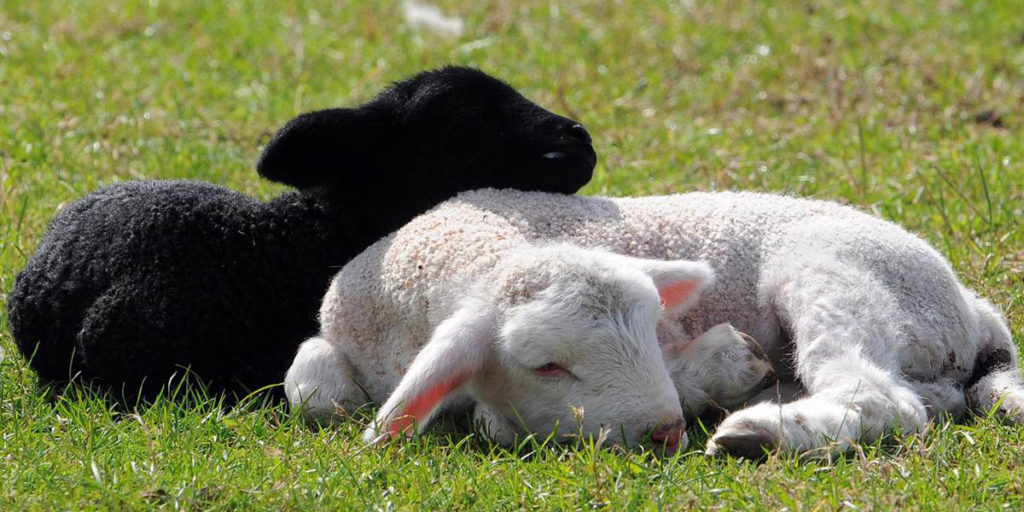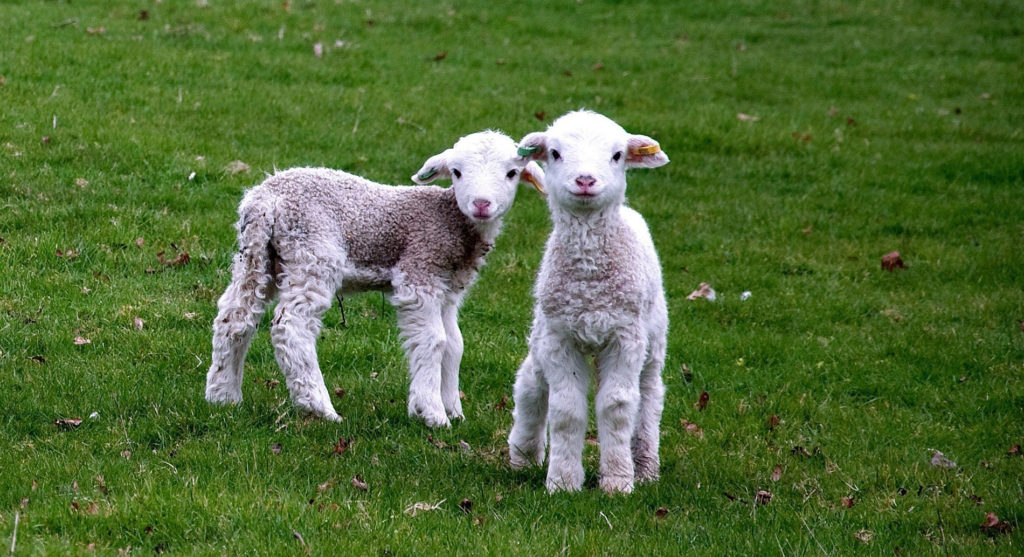For a lamb to grow up healthy
, it must be well fed during childhood. Therefore, it is extremely important to immediately develop a balanced diet. But the difficulty lies in the fact that at different stages of development it changes. Therefore, in this article we will consider what should be the feed for lambs under the age of 4 months. The nutrition of the newborn under normal conditions is completely dependent on the female sheep. But sometimes it happens that the lamb is left without a mother. We will consider both options.With mother
When a baby is lucky to have a nursing mother, this is already half the battle. For the first two months, he feeds exclusively on her milk. However, it is still worth controlling what is happening. It is important to ensure that at this stage he has enough milk. If the baby does not eat enough, he will begin to weaken, get sick and may die.
The first feeding should occur within an hour of birth. The udder must be clean. Also, before serving, it is better to drain the first batch of liquid a little, it can be stagnant and dirty.
In the first week after giving birth, the female does not produce milk, but colostrum. It is extremely important for the health of the baby lamb. It contains a huge list of nutrients that help to grow the correct microflora in digestion, prevent the development of intestinal diseases and stimulate the development of the immune system.


Without a mother
This scenario is not the easiest, but there are ways out of it. The first and best one is to plant the baby on another lactating female. But this is not so easy to do, because the mother distinguishes her offspring by smell. Therefore, it is better to find out the nuances of such a procedure in advance, before the baby is born.
Option two. If there is no spare female or it is not possible to plant it, only self-feeding remains. For the first two days, the lamb needs colostrum. Without it, it will most likely die. Therefore, if it is not possible to find it within your livestock, you need to buy elsewhere. They need to be fed at least once, but more is better. If the first stage is passed, you can feed with milk of sheep, cow or goat (as a last resort). Before serving, it must be heated to 35-40 degrees. Feed through a pacifier.
Feeding frequency. In the first seven days: six times a day at regular intervals, about two and a half hours. From the second week, the frequency of feeding is reduced to five times a day. From the third to the sixth week: four times a day. From the seventh week you can gradually shift it to three meals a day.
General information
- At the beginning of the second week of life, hay is added to the diet, but only the high-quality hay. The first portion should be small, and then the lamb should regulate its own rate. This product is important, as it affects the proper formation of a rumen in digestion.
- The middle of the second week is the time of minerals. At this time, there is a need for mineral components: calcium, phosphorus, sodium chloride and others. Their sources are meat and bone meal, chalk, eggshells, salt and others. Minerals contribute to the proper development of the musculoskeletal system and muscle fibers. Therefore, in the habitat of lambs, it is necessary to organize a container with these products.
- At the same time, tree branches are introduced into the diet to support digestion. They are soft, nutritious, easy to digest, and contain many vitamins. They are the subject of prevention of diseases of the oral cavity and digestion.
- Two weeks. Juicy food will be a pleasant novelty. But you should be careful both in the amount of servings and in the variety of plants. Plants must be added one at a time. No more than one new one per day. The portion should also increase gradually.
What products should be included:
- Greens (a little bit);
- carrots (chopped);
- fodder beets (grind before serving, give carefully, because a baby lamb may have swelling);
- apples (dried);
- potatoes (only boiled, otherwise a baby lamb may have diarrhea).
- From the third week, concentrate feeds can be included in the diet. Ivy oats in the form of thin porridge or wheat bran.
– Up to 30 days: no more than 50 grams per day.
– From 30 to 60 days: the portion is increased to 100 gr.
– From 60 to 90 days: the portion is increased to 200 gr.
– From 90 to 120 days: the portion is increased to 300 grams per day. - At the age of 30 days, you can start giving compound feed. The portion of which should be increased gradually. The portion of succulent feed also continues to grow. But the proportion of milk in relation to other feeds should begin to decrease.
- At the age of 60-90 days, milk should be completely eliminated from the diet.
- At 120 days, the lamb is completely weaned from its mother, for at least three weeks, for the final loss of connection. From this age, the diet of an individual is no different from an adult.
Remember that the times and portions described in this article are only rough guidelines. For clearer guidelines, consult your veterinarian!
Compound feed concentrate for sheep
What do horses eat? How to feed? Read here:
Compound feed concentrates for horses








